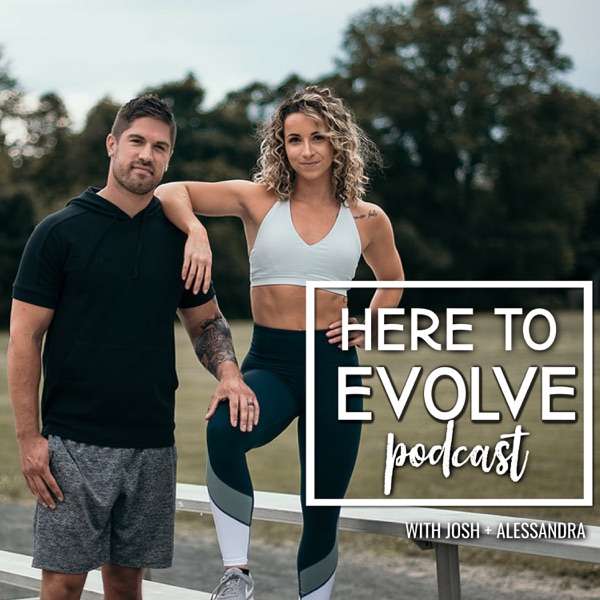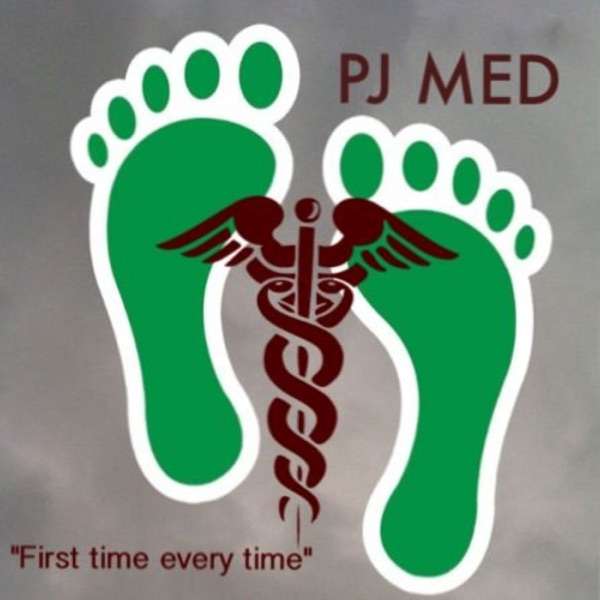DRA, the separation of the abdominal muscles most often associated in women with pregnancy, is very close to my heart and I am so excited to bring you this AMAZING conversation on the research on #exercise for #diastasisrecti with David Larson @dmlarson31 dmlarson@asu.edu
Aside from discussing what research we do have , the drawbacks of this limited data, and the physiology behind the effects of adequate load on connective tissue, he talks about his research into patient satisfaction with exercise programs. Just because as professionals we think someone is better, doesn't mean they feel that way.
Bio from Arizona State University website: (see below for reference list)
David is a Lecturer and Coordinator for CHS100/300 in the College of Health Solutions at Arizona State University. David earned a Doctoral degree in Health Science from A. T. Still University, Masters degree in Kinesiology from A. T. Still University, and a Bachelors degree Kinesiology from Arizona State University. His research is primarily focused on conservative treatment modalities such as abdominal strength training for the postpartum condition diastasis recti. David is a Certified Strength and Conditioning Specialist (CSCS), a Certified Pre- and Postnatal Coach (CPPC), and Certified Level 2 Nutrition Coach through Precision Nutrition (PN2). He specializes in pre- and post-natal training, youth athletic performance, and strength and conditioning and has over 10 years of experience in the fitness and sport performance industry.
Reference list:
Acharry, N., & Kutty, R. K. (2015). Abdominal exercise with bracing, a therapeutic efficacy in reducing diastasis-recti among postpartal females. International Journal of Physiotherapy and Research, 3(2), 999-1005. doi:10.16965/ijpr.2015.122
Awad, M. A., Mahmoud, A. M., El-Ghazaly, H. M., & Tawfeek, R. M. (2017). Effect of Kinesio Taping on Diastasis Recti. Med. J. Cairo Univ., 85(6), 2289-2296.
Benjamin, D., Van de Water, A., & Peiris, C. (2014). Effects of exercise on diastasis of the rectus abdominis muscle in the antenatal and postnatal periods: a systematic review. Physiotherapy, 100(1), 1-8. doi:https://doi.org/10.1016/j.physio.2013.08.005
Bo, K., Hilde, G., Tennfjord, M. K., Sperstad, J. B., & Engh, M. E. (2017). Pelvic floor muscle function, pelvic floor dysfunction and diastasis recti abdominis: Prospective cohort study. Neurourol Urodyn, 36(3), 716-721. doi:10.1002/nau.23005
Boissonnault, J. S., & Blaschak, M. J. (1988). Incidence of diastasis recti abdominis during the childbearing year. Phys Ther, 68(7), 1082-1086.
Chiarello, C. M., McAuley, J. A., & Hartigan, E. H. (2016). Immediate Effect of Active Abdominal Contraction on Inter-recti Distance. J Orthop Sports Phys Ther, 46(3), 177-183. doi:10.2519/jospt.2016.6102
da Mota, P. G. F., Pascoal, A. G. B. A., Carita, A. I. A. D., & Bø, K. (2015). Prevalence and risk factors of diastasis recti abdominis from late pregnancy to 6 months postpartum, and relationship with lumbo-pelvic pain. Manual therapy, 20(1), 200-205.
El-Kosery, S. M., El-Aziz, A. A., & Farouk, A. (2007). Abdominal muscles exercise program and/or electrical stimulation in postnatal diastasis recti. Bull. Fac. Ph. Th. Cairo Univ, 12(2).
El-Mekawy, H. S., Eldeeb, A. M., El-Lythy, M. A., & El-Begawy, A. F. (2013). Effect of Abdominal Exercises versus Abdominal Supporting Belt on Post-Partum Abdominal Efficiency and Rectus Separation. International Journal of Medical and Health Sciences, 7(1), 75-79.
Gallus, K. M., Golberg, K. F., & Field, R. (2016). Functional Improvement Following Diastasis Rectus Abdominus Repair in an Active Duty Navy Female. Military Medicine, 181(8), e952-e954. doi:10.7205/MILMED-D-15-00387
Gluppe, S. L., Hilde, G., Tennfjord, M. K., Engh, M. E., & Bo, K. (2018). Effect of a Postpartum Training Program on the Prevalence of Diastasis Recti Abdominis in Postpartum Primiparous Women: A Randomized Controlled Trial. Phys Ther, 98(4), 260-268. doi:10.1093/ptj/pzy008
Gluppe, S. L., Hilde, G., Tennfjord, M. K., Engh, M. E., & Bø, K. (2018). Effect of a Postpartum Training Program on the Prevalence of Diastasis Recti Abdominis in Postpartum Primiparous Women: A Randomized Controlled Trial [Article]. Physical Therapy, 98(4), 260-268. doi:10.1093/ptj/pzy008. (Accession No. 128847946)
Grgic, J., Schoenfeld, B. J., & Latella, C. (2019). Resistance training frequency and skeletal muscle hypertrophy: A review of available evidence. Journal of Science and Medicine in Sport, 22(3), 361-370. doi:https://doi.org/10.1016/j.jsams.2018.09.223
Gunnarsson, U., Stark, B., Dahlstrand, U., & Strigård, K. (2015). Correlation between Abdominal Rectus Diastasis Width and Abdominal Muscle Strength. Digestive Surgery, 32(2), 112-116. doi:10.1159/000371859
Gürşen, C., İnanoğlu, D., Kaya, S., Akbayrak, T., & Baltacı, G. (2016). Effects of exercise and Kinesio taping on abdominal recovery in women with cesarean section: A pilot randomized controlled trial. Archives of gynecology and obstetrics, 293(3), 557-565. doi:10.1007/s00404-015-3862-3
Hills, N. F., Graham, R. B., & McLean, L. (2018). Comparison of Trunk Muscle Function Between Women With and Without Diastasis Recti Abdominis at 1 Year Postpartum. Phys Ther, 98(10), 891-901. doi:10.1093/ptj/pzy083
Kamel, D. M., & Yousif, A. M. (2017). Neuromuscular Electrical Stimulation and Strength Recovery of Postnatal Diastasis Recti Abdominis Muscles [Article]. Annals of Rehabilitation Medicine, 41(3), 465-474. doi:10.5535/arm.2017.41.3.465. (Accession No. 124103784)
Keeler, J., Albrecht, M., Eberhardt, L., Horn, L., Donnelly, C., & Lowe, D. (2012). Diastasis recti abdominis: a survey of women's health specialists for current physical therapy clinical practice for postpartum women. Journal of women’s health physical therapy, 36(3), 131-142.
Keshwani, N., Mathur, S., & McLean, L. (2018). Relationship Between Interrectus Distance and Symptom Severity in Women With Diastasis Recti Abdominis in the Early Postpartum Period. Physical Therapy, 98(3), 182-190. doi:10.1093/ptj/pzx117
Khandale, S. R., & Hande, D. (2016). Effects of abdominal exercises on reduction of diastasis recti in postnatal women. IJHSR, 6(6), 182-191.
Lee, D., & Hodges, P. W. (2016). Behavior of the linea alba during a curl-up task in diastasis rectus abdominis: an observational study. journal of orthopaedic & sports physical therapy, 46(7), 580-589.
Lee, H., Kim, I.-G., Sung, C., & Kim, J.-S. (2017). The Effect of 12-Week Resistance Training on Muscular Strength and Body Composition in Untrained Young Women: Implications of Exercise Frequency. Journal of Exercise Physiology Online, 20, 88+.
Liaw, L. J., Hsu, M. J., Liao, C. F., Liu, M. F., & Hsu, A. T. (2011). The relationships between inter-recti distance measured by ultrasound imaging and abdominal muscle function in postpartum women: a 6-month follow-up study. J Orthop Sports Phys Ther, 41(6), 435-443. doi:10.2519/jospt.2011.3507
Litos, K. (2014). Progressive therapeutic exercise program for successful treatment of a postpartum woman with a severe diastasis recti abdominis. Journal of Women’s Health Physical Therapy, 38(2), 58-73. doi:10.1097/JWH.0000000000000013
Michalska, A., Rokita, W., Wolder, D., Pogorzelska, J., & Kaczmarczyk, K. (2018). Diastasis recti abdominis - a review of treatment methods. Ginekol Pol, 89(2), 97-101. doi:10.5603/GP.a2018.0016
Mota, P., Pascoal, A., Carita, A., & Bø, K. (2015). Inter-recti distance at rest, during abdominal crunch and drawing in exercises during pregnancy and postpartum. Physiotherapy, 101, e1050-e1051.
Newman-Beinart, N. A., Norton, S., Dowling, D., Gavriloff, D., Vari, C., Weinman, J. A., & Godfrey, E. L. (2017). The development and initial psychometric evaluation of a measure assessing adherence to prescribed exercise: the Exercise Adherence Rating Scale (EARS). Physiotherapy, 103(2), 180-185. doi:10.1016/j.physio.2016.11.001
Parker, M. A., Millar, L. A., & Dugan, S. A. (2009). Diastasis rectus abdominis and lumbo-pelvic pain and dysfunction-are they related? Journal of Women’s Health Physical Therapy, 33(2), 15-22.
Thabet, A., & Alshehri, M. A. (2019). Efficacy of Deep Core Stability Exercise Program in Postpartum Women with Diastasis Recti Abdominis: A Randomised Controlled Trial (Vol. 19).
Tuttle, L. J., Fasching, J., Keller, A., Patel, M., Saville, C., Schlaff, R., . . . Gombatto, S. P. (2018). Noninvasive Treatment of Postpartum Diastasis Recti Abdominis: A Pilot Study. Journal of Women’s Health Physical Therapy, 42(2), 65-75. doi:10.1097/JWH.0000000000000101
Walton, L. M., Costa, A., LaVanture, D., McIlrath, S., & Stebbins, B. (2016). The effects of a 6 week dynamic core stability plank exercise program compared to a traditional supine core stability strengthening program on diastasis recti abdominis closure, pain, Oswestry disability index (ODI) and pelvic floor disability index scores (PFDI). Physical Therapy and Rehabilitation, 3(1), 3. doi:http://dx.doi.org/10.7243/2055-2386-3-3
Youssef, A. M., Sabbour, A. A., & Kamel, R. M. (2003). Muscle Activity in Upper and Lower Portions of Rectus Abdominis During Abdominal Exercises in Postnatal Women Having Diastasis Recti. Bull. Fac. Ph. Th. Cairo Univ, 8(1).
Listen and enjoy and a big thanks to Always Discreet for sponsoring this episode of The Pelvic Health Podcast. Head to Always Discreet to learn more about bladder leak tips, management and incredible bladder leakage protection!

 Our TOPPODCAST Picks
Our TOPPODCAST Picks  Stay Connected
Stay Connected






